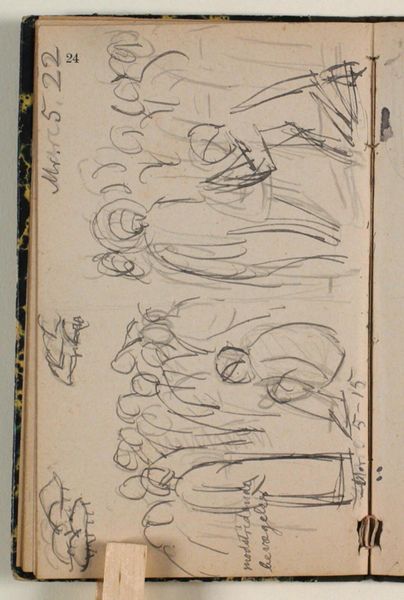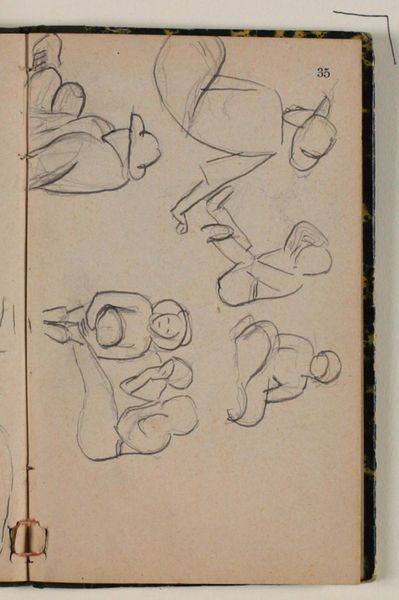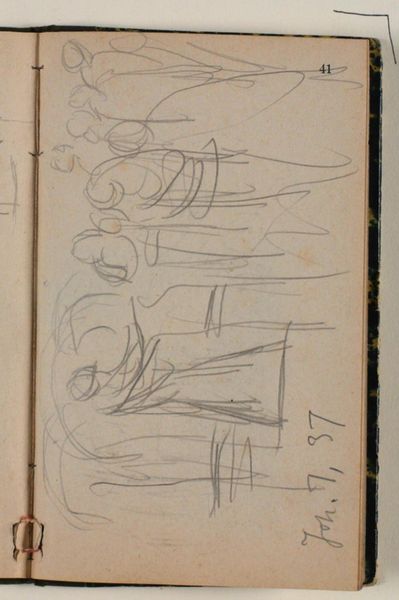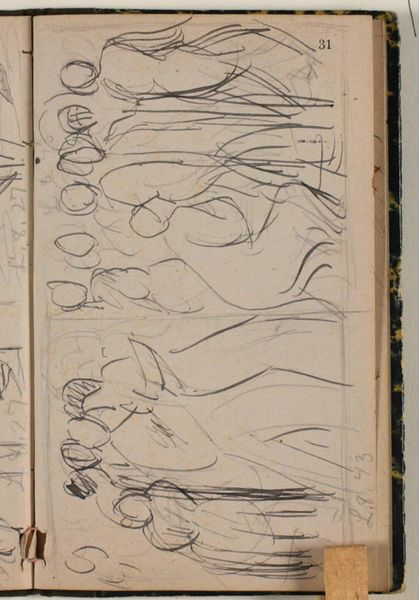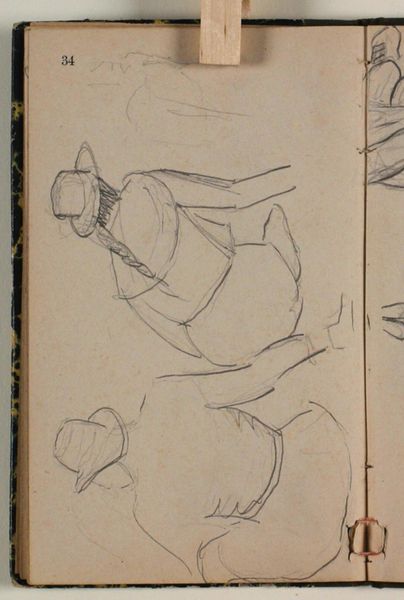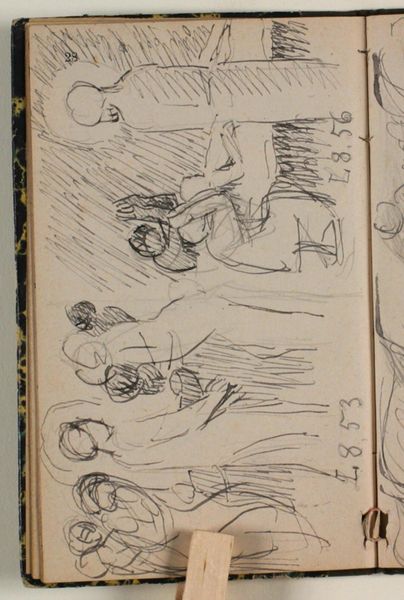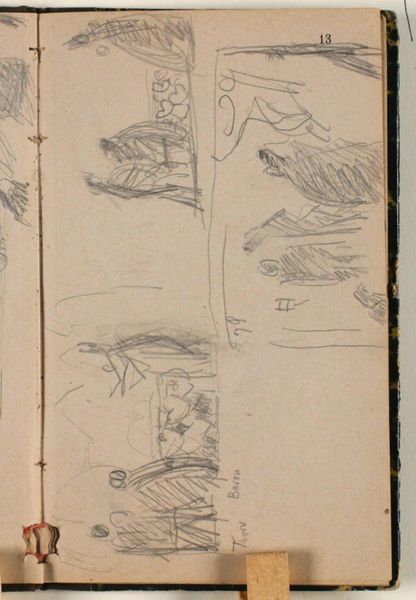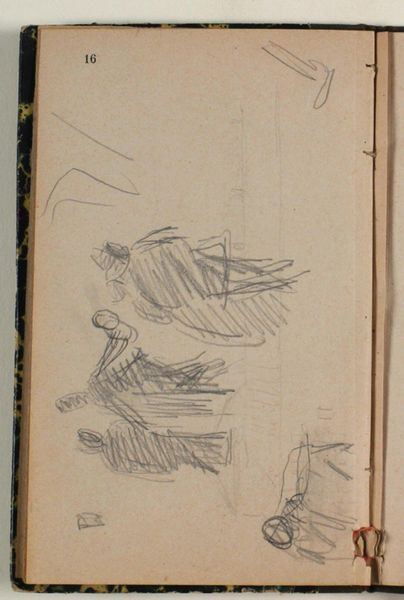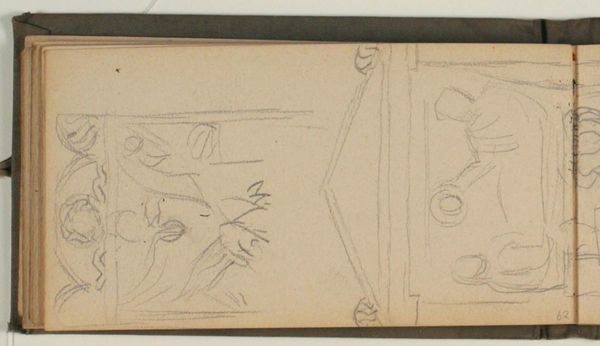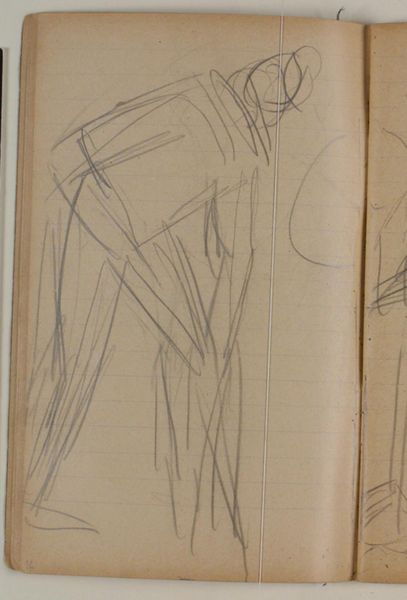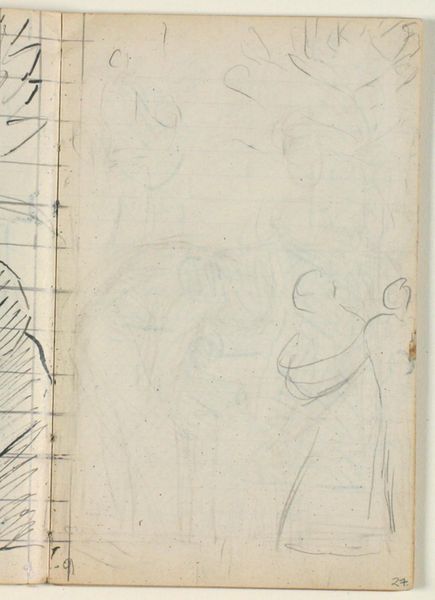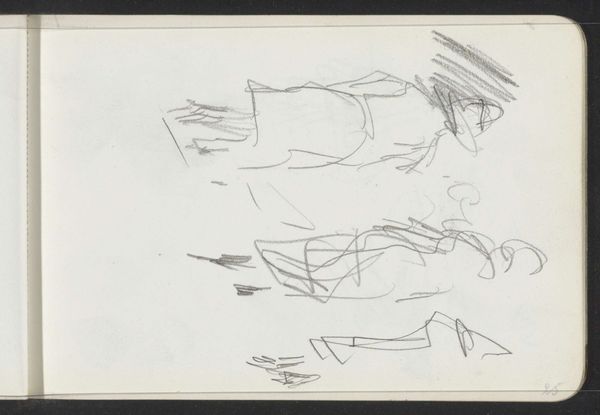
drawing, paper, pencil
#
drawing
#
toned paper
#
narrative-art
#
sketch book
#
figuration
#
paper
#
personal sketchbook
#
idea generation sketch
#
sketchwork
#
ink drawing experimentation
#
pen-ink sketch
#
pencil
#
sketchbook drawing
#
storyboard and sketchbook work
#
sketchbook art
Dimensions: 153 mm (height) x 93 mm (width) (monteringsmaal), 153 mm (height) x 93 mm (width) (bladmaal)
Curator: This sketch, entitled "Udkast til bibelsk motiv. Om Ærgerlighed" which translates to "Draft for a biblical motif. About annoyance," comes to us from Niels Larsen Stevns, likely dating between 1864 and 1941. It resides here at the SMK, Statens Museum for Kunst. Editor: It's raw, isn't it? Like catching a glimpse into the artist's thought process. The loose lines and quick strokes create a sense of immediacy, and the toned paper gives it a certain warmth, despite what I imagine to be an irritating subject. Curator: Indeed. Given Stevns' background and the title, we can infer a social commentary embedded within. Annoyance, as a subject, gains meaning when considering it’s portrayal via biblical narrative. Could this represent frustration with social injustice? Or religious hypocrisy perhaps? Editor: It's interesting you mention injustice because when I focus on the materials, the humble pencil and paper, I think about accessibility. Sketchbooks are inherently about democratizing art making. These rough sketches wouldn’t need expensive paints or a formal studio space. They would be readily available to the working class and those unable to access institutionalized education, yes? Curator: Yes, the availability speaks volumes! However, art during that era became intrinsically tied to class structures and those very institutions, despite humble starting points. But you raise an important question – did Stevns intend to subvert traditional expectations of religious art or create something more personally reflective using biblical context? The multiple figures also imply narratives beyond individual emotion. Editor: Look at the repeated forms, too; how they seem almost mass-produced in their rendering. It almost mirrors anxieties of his time: anxieties towards new machineries making works of humans near obsolete. He really could have made something that spoke toward social divisions by visualizing what it felt like on the shop floor. Curator: I see that parallel! These recurring figures lend the drawing a universality, reflecting collective frustrations and perhaps anxieties. But remember that during this period there was also significant political unrest... Editor: Ultimately, the work reveals the dynamism between the immediate experiences available to us while interacting with something sketched onto humble paper with simple materials, and something we learn through our culture and institutions. I love those tensions in a work of art. Curator: A wonderful point. It shows that an exploration into this particular image allows us to understand Stevns' social environment from varied viewpoints, providing insightful, multilayered engagement.
Comments
No comments
Be the first to comment and join the conversation on the ultimate creative platform.
